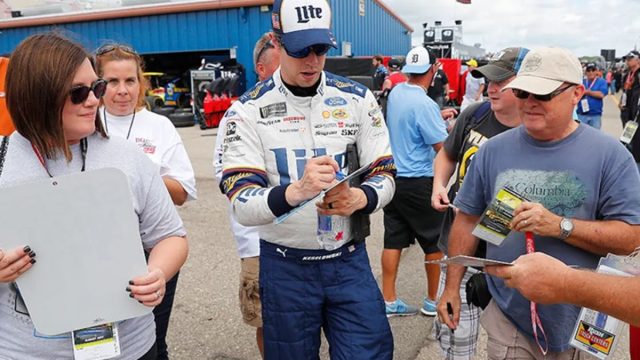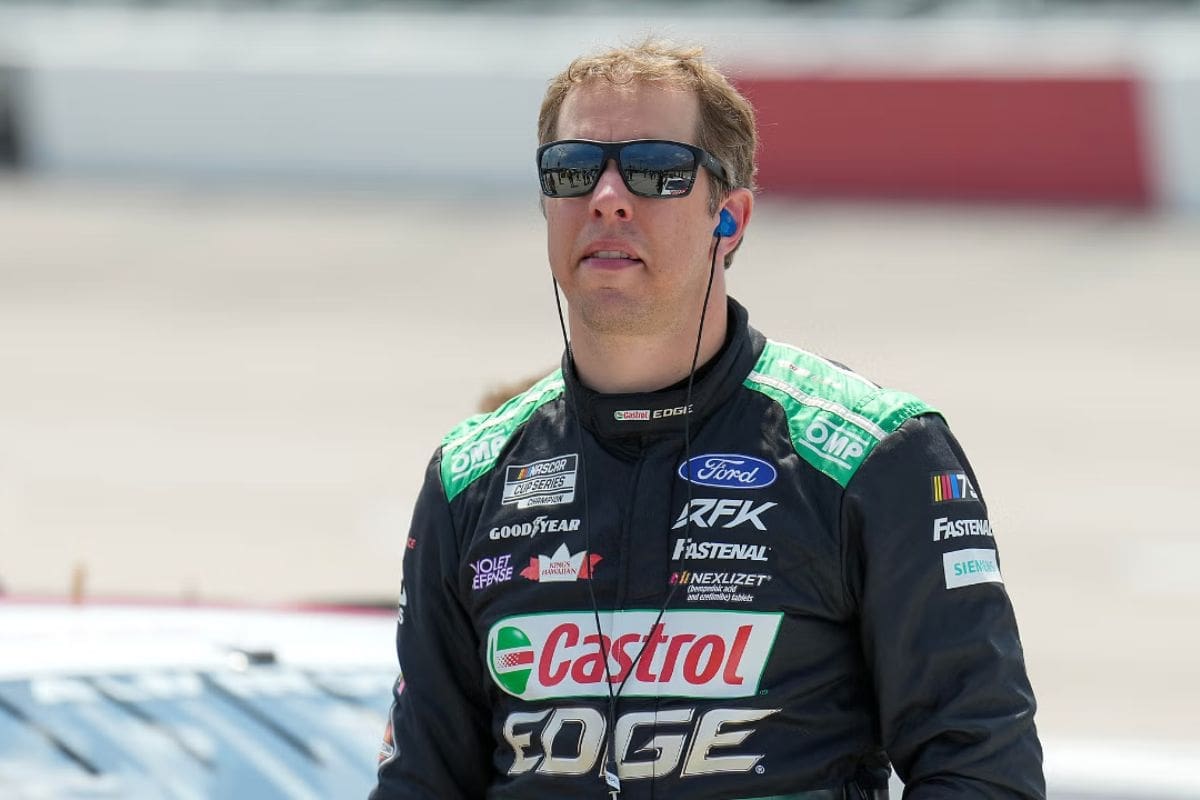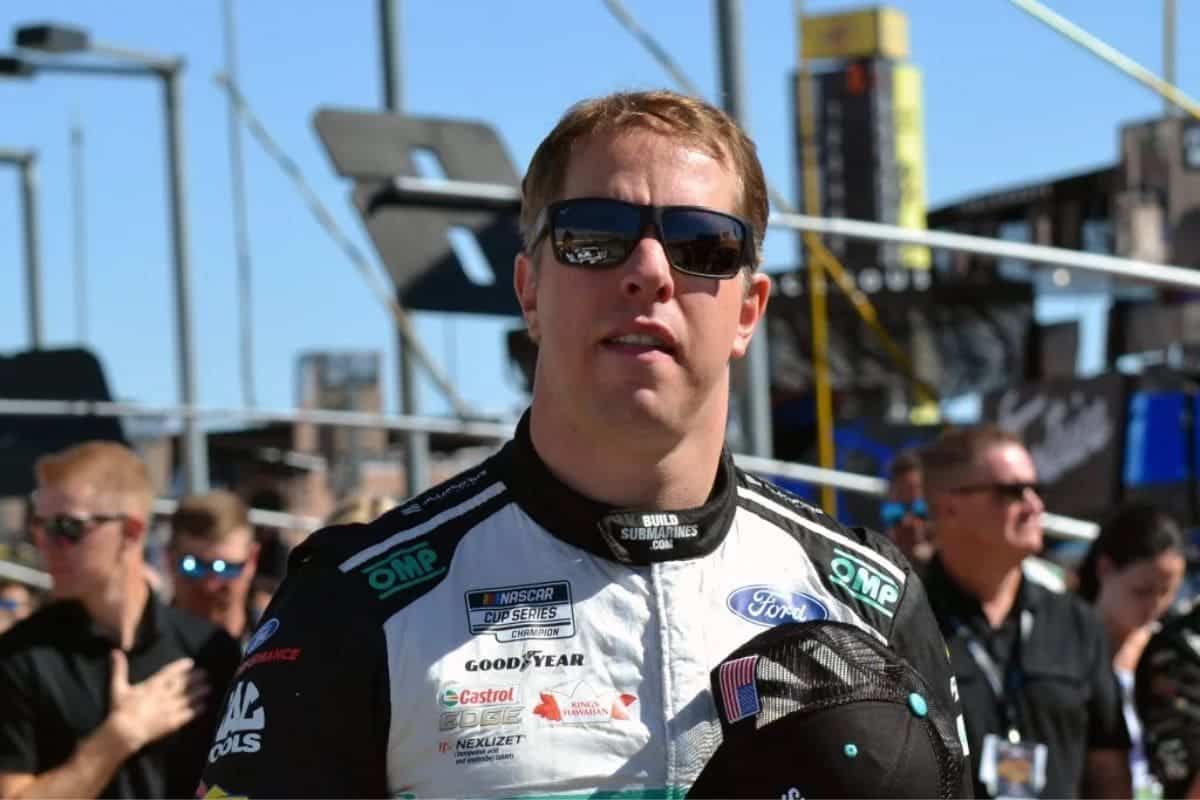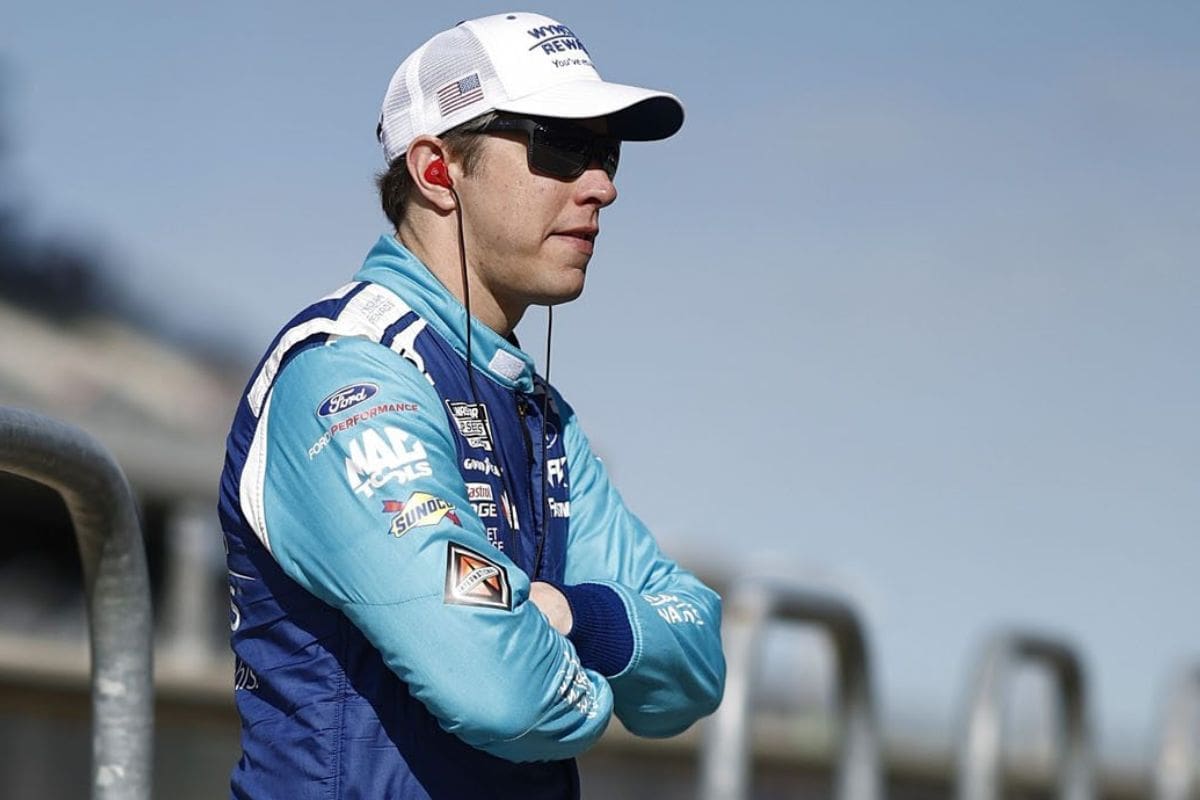Brad Keselowski Blames Next-Gen Car: Brad Keselowski‘s recent remarks about the financial strain imposed by the Next-Gen car have sparked a critical conversation within NASCAR circles. He asserts that the advanced technology and escalating costs of these vehicles are pushing team owners to their financial limits, particularly affecting the sustainability of smaller teams like RFK Racing. Keselowski’s insights bring attention to the broader economic strains, including inflation, that further complicate the financial landscape of the sport. As teams struggles with these challenges, the ongoing negotiations around charters and future financial models become even more crucial. What solutions might emerge amid these economic strains?
Key Highlights
- Brad Keselowski highlights the financial strain caused by the advanced technology of the NextGen car.
- Operational costs for teams have surged with the introduction of the NextGen car.
- Keselowski points out that cost savings from standardized parts are offset by the need for specialized equipment.
- The financial burden of the NextGen car has increased the complexity of charter negotiations.
- Keselowski emphasizes the necessity of balancing NextGen car expenses with long-term team viability.
Introduction to the High Costs of Owning a NASCAR Team
Owning a NASCAR team today demands significant financial investment, with initial costs ranging from $25 million to $40 million just to secure a charter, ensuring participation in every points-paying race of the season. This charter system, introduced to guarantee stability and predictability for team owners, represents only the initial financial hurdle. The charter grants a team the right to compete but does not cover the myriad additional expenses that come with operating a top-tier racing team.
Beyond the acquisition of the charter, teams face substantial ongoing costs. These include salaries for drivers, engineers, and support staff, extra expenses related to the development, maintenance, and transportation of the race cars. The technological demands in NASCAR have escalated, requiring sophisticated engineering and data analysis capabilities to remain competitive. State-of-the-art facilities for car development, wind tunnel testing, and on-track adjustments are now crucial, driving up operational expenditures.
Moreover, sponsorship deals, while lucrative, are increasingly difficult to secure and often cover only a fraction of the total budget. Teams must also invest in marketing, hospitality, and fan engagement to attract and retain sponsors. The financial burden is compounded by the necessity of continuous investment in innovation to keep pace with the rapid advancements in race car technology and regulatory changes.
This financial landscape highlights the considerable challenge of sustaining a NASCAR team. The initial outlay for a charter is merely the beginning of a continuous cycle of investment, requiring astute financial management and strategic planning. The high costs serve as a barrier to entry, limiting participation to those with significant financial backing or groundbreaking funding solutions.
Brad Keselowski’s Perspective on RFK Racing’s Challenges
Despite the substantial financial commitments required to sustain a NASCAR team, Brad Keselowski sheds light on the unique and evolving challenges faced by RFK Racing, particularly in the context of the new ‘NextGen’ car era. As the longest-tenured partner of Ford Performance in NASCAR, RFK Racing is no stranger to the complexities of motorsport economics. However, Keselowski’s recent insights on Kevin Harvick’s ‘Happy Hour’ podcast paint a sobering picture of the current landscape.
“My point of view is that you know the sport’s very expensive. You know, we have a lot of inflation-related matters that are hitting NASCAR just as they’re hitting everybody else. And you know, the cost to operate a team has never been more expensive.” – Keselowski
Keselowski emphasizes that the shift to the ‘NextGen’ car has fundamentally altered the operational dynamics of RFK Racing. The introduction of this new vehicle has not only escalated costs but also demanded swift adaptation to its novel technological and mechanical specifications. This dual pressure of financial strain and technical recalibration has left RFK Racing grappling with sustainability issues that were previously under control.
Keselowski’s insights reveal that RFK Racing’s struggle is multifaceted, encompassing both immediate and long-term challenges. The financial and technical burdens associated with the ‘NextGen’ car have disrupted the equilibrium that RFK Racing once maintained, compelling them to navigate an uncertain and rapidly shifting competitive landscape.
The Impact of Inflation and NextGen Car Costs
The interplay between rising inflation and the escalating costs associated with the NextGen car has compounded financial burdens on NASCAR teams, creating an intricate web of economic challenges that require astute management and strategic foresight.
Inflation, a macroeconomic variable impacting virtually all sectors, has led to increased prices for essential resources such as raw materials, transportation, and labor. In parallel, the introduction of the NextGen car, designed to standardize parts and boost competition, has inadvertently escalated operational expenses due to higher initial costs and maintenance requirements.
The NextGen car’s advanced technology and components, while improving performance and safety, come with a steep price tag. Teams are finding that the cost savings anticipated from standardized parts are offset by the need for specialized equipment and skilled technicians to service these sophisticated machines. Additionally, the learning curve associated with new technologies necessitates further investment in training and development, further straining financial resources.
Moreover, the pervasive impact of inflation exacerbates these challenges. Rising costs for fuel, tires, and other consumables directly affect teams’ budgets, while increased labor costs and supply chain disruptions add layers of complexity to financial planning.
The combined effect of these factors is a heightened financial strain, particularly for mid-tier and smaller teams that lack the financial depth to absorb such shocks.
In this context, NASCAR teams must navigate a delicate balance between maintaining competitive performance and ensuring financial viability. Strategic cost management, creative sponsorship deals, and operational efficiencies are crucial to mitigate the twin challenges of inflation and NextGen car costs.
Without such measures, the financial sustainability of many teams could be at risk, threatening the competitive integrity and diversity of the sport.
Challenges in Charter Negotiations
Managing the complexities of charter negotiations has become increasingly challenging as teams grapple with the financial demands imposed by rising costs and the requirements of the NextGen car. According to Brad Keselowski, the inflationary pressures have exacerbated these challenges, creating a notable budget deficit that teams are working hard to address. This financial strain is not just a passing concern but a fundamental issue that affects the sustainability of teams in the NASCAR ecosystem.
Keselowski’s insights highlight a critical turning point in the negotiations: the disparity between the escalating costs and the available financial resources. Teams are effectively caught in a bind, needing to balance the immediate necessity of meeting NextGen car costs against the long-term viability of their operations. This conundrum has made charter negotiations particularly tense, as teams seek fair solutions to mitigate their budgetary shortfalls.
“drives the charter negotiation because the teams are just screaming like, we have a huge deficit with our budgets… that kind of puts the whole charter negotiation in this unique place where the teams are are just trying to figure out how are we going to pay for things.”
“there is no way around it. It has to be, because it’s built by third parties, and those third parties have to make a profit to be in business.” – Keselowski
This analytical framework highlights the multifaceted nature of the negotiations. The teams’ financial health is paramount, yet it must be balanced against the broader competitive and technological advances promised by the NextGen car. The negotiations, thus, revolve around finding a middle ground that acknowledges both the fiscal realities and the strategic ambitions of NASCAR. As Keselowski articulates, the resolution of these negotiations is crucial to ensuring the sport’s continued evolution amidst financial constraints.
“If you look at headcounts in the teams the head counts went down generally 10 to 20%. The problem is inflation hit everybody by another 20. So you kind of nullified all those gains. And then the car costs more… But I don’t know if it’s necessarily fair to blame that on the NextGen car. I honestly think the NextGen car itself was a wash between the difference of third-party versus internal manufacturing.” – Keselowski
Future Prospects
Investigating the future prospects of NASCAR’s financial landscape requires a strategic reassessment of revenue streams and partnership engagements, especially considering evolving media consumption trends. Brad Keselowski’s observations highlight a critical shift in the sport’s economic dynamics, particularly as traditional broadcast models give way to digital and streaming platforms. This change poses both challenges and opportunities for NASCAR and its stakeholders.
Keselowski’s assertion that the changing TV market introduces complexities in securing and engaging partners emphasizes a significant issue. As viewership migrates from conventional TV to streaming services, the ability to deliver value to sponsors becomes more intricate. The shift necessitates creative approaches to sponsorship deals and fan engagement strategies, ensuring that the sport remains appealing to both traditional and digital audiences.
“the new TV market and that’s changing almost every day, has put another kind of wrench in that (charter deal). Because the more we move off of broadcast and we move to streaming services and all these other things, the harder it is to kind of, get the partners engaged the way we want to get them engaged.”
From a financial perspective, the potential for increased revenue through diverse media platforms offers a silver lining. Streaming services, often characterized by their expansive reach and targeted advertising capabilities, could attract new sponsors willing to invest in NASCAR’s evolving viewership landscape. This could translate into more robust financial support for the teams, potentially alleviating some of the economic challenges exacerbated by the Next-Gen car’s costs.
“The conversation is mostly about: how do we create a stable platform to where the teams aren’t losing money…”
“there are well-managed teams that are losing money.” – Keselowski
However, achieving a stable financial platform for all stakeholders requires a balanced approach. As Keselowski highlighted, even well-managed teams are currently facing financial losses. Therefore, NASCAR must consider equitable revenue-sharing models that ensure sustainability for the teams. Collaborative efforts between NASCAR, teams, and media partners are crucial to develop frameworks that enhance financial stability and growth.
News in Brief: Brad Keselowski Blames Next-Gen Car
The financial strain imposed by the Next-Gen car on NASCAR teams, as articulated by Brad Keselowski, highlights a critical issue within the sport.
Escalating costs linked to advanced technology, coupled with inflationary challenges, present significant obstacles for team owners in maintaining economic stability.
Maneuvering through these financial complexities is crucial for the future sustainability of NASCAR teams.
Addressing these concerns through strategic financial planning and charter negotiations will be crucial in ensuring the long-term viability of the sport.
Our Reader’s Queries
Q. How many times has Brad Keselowski won at Talladega?
A. Brad Keselowski holds the title of the winningest active driver at Talladega, boasting six NASCAR Cup Series victories at the iconic track. He shares the second spot on the all-time list with legends Dale Earnhardt Jr. and Jeff Gordon.
Q. Has Brad Keselowski won at Darlington?
A.Brad Keselowski’s blend of persistence and strategic patience yielded impressive results on Sunday at Darlington Raceway, propelling the driver of the No. [car number] to a triumphant finish.
Q. Is Brad Keselowski a Cup champion?
A. His life took a definitive turn in 2010 when Brad Keselowski secured a full-time Cup ride with the esteemed Roger Penske. By 2012, he clinched his inaugural — and to date, only — Cup Series championship.
ALSO READ: Brad Keselowski Reflects on Truex Jr’s NASCAR Exit: “Life Is About Change”



